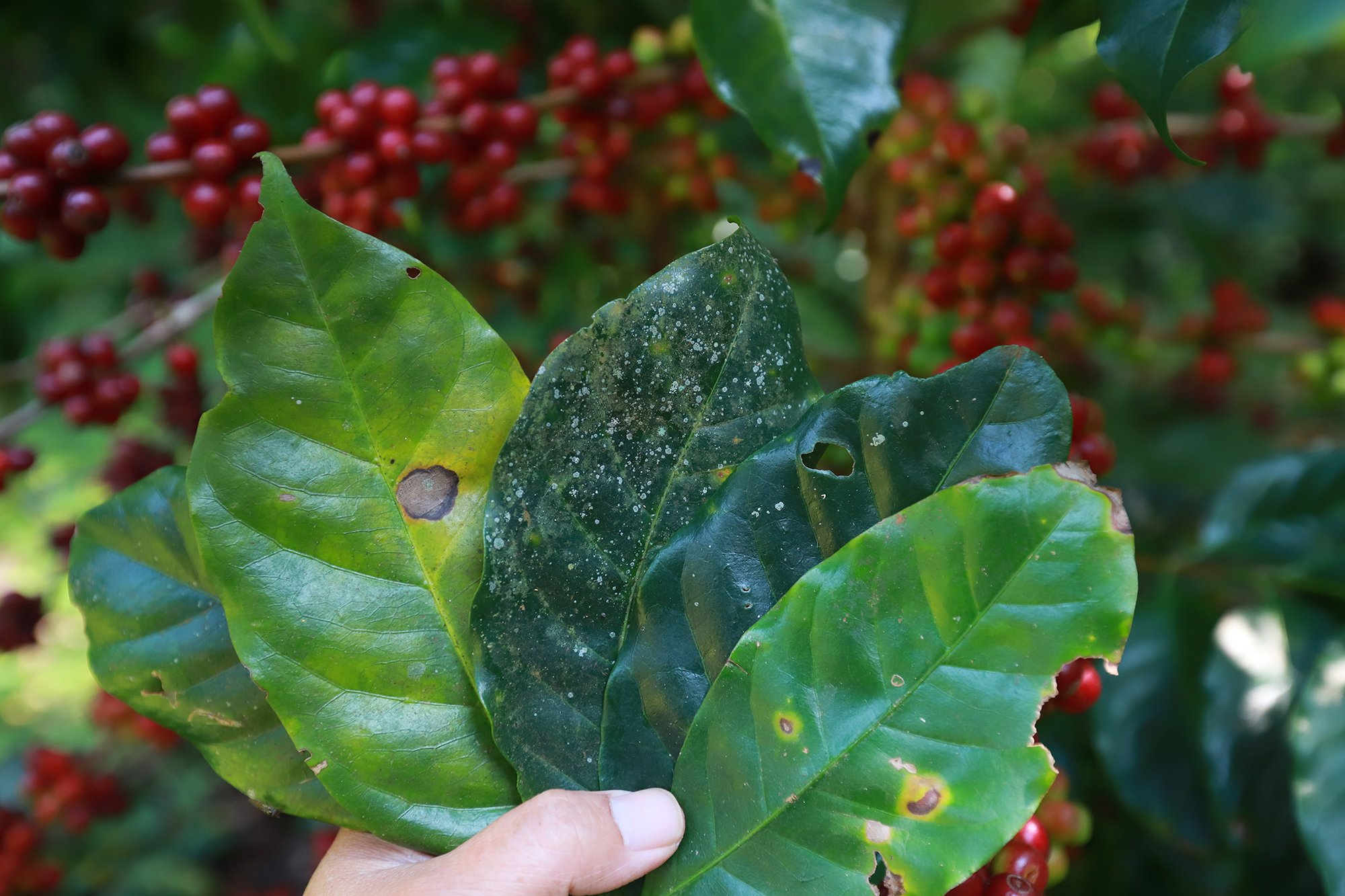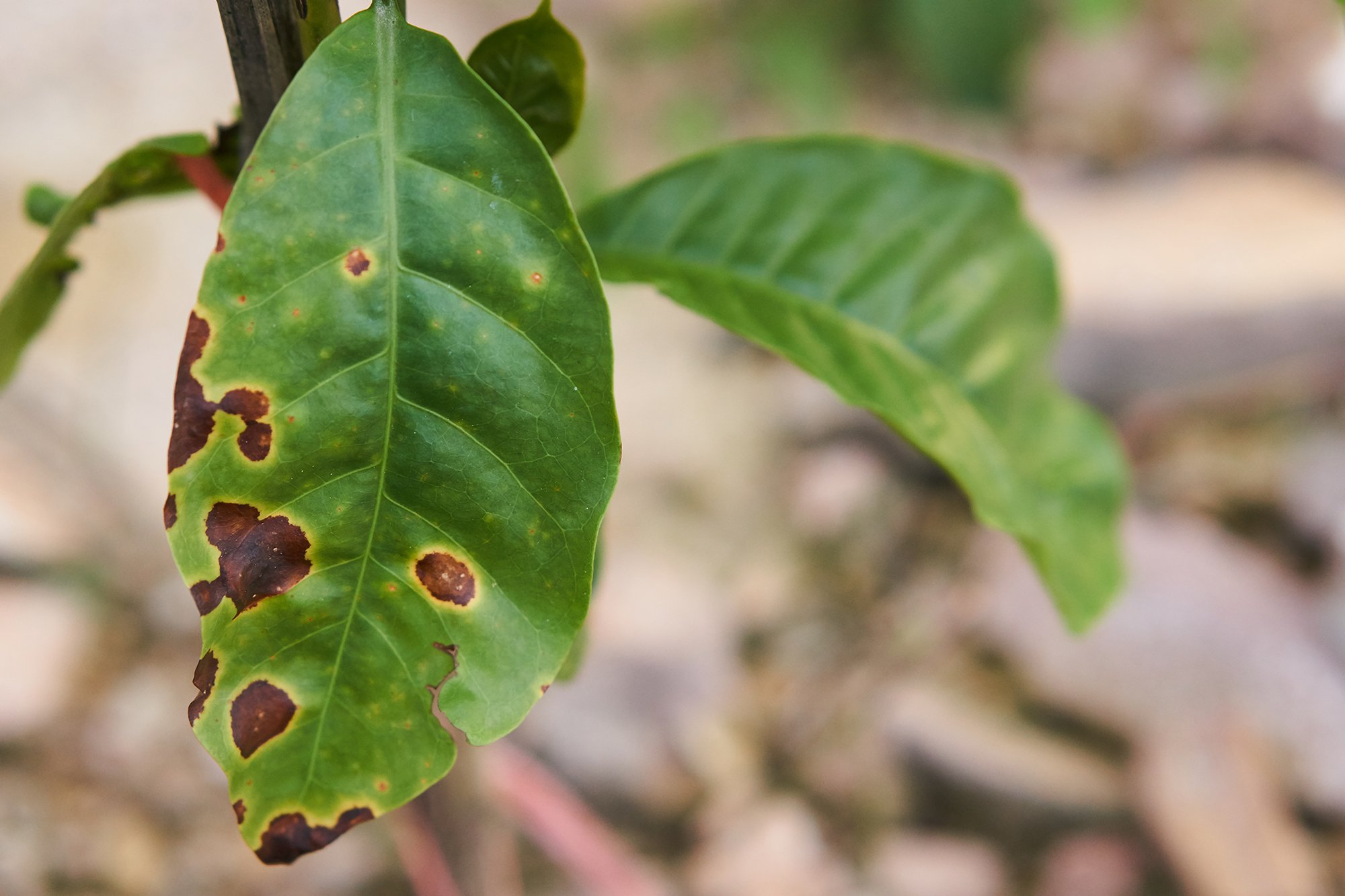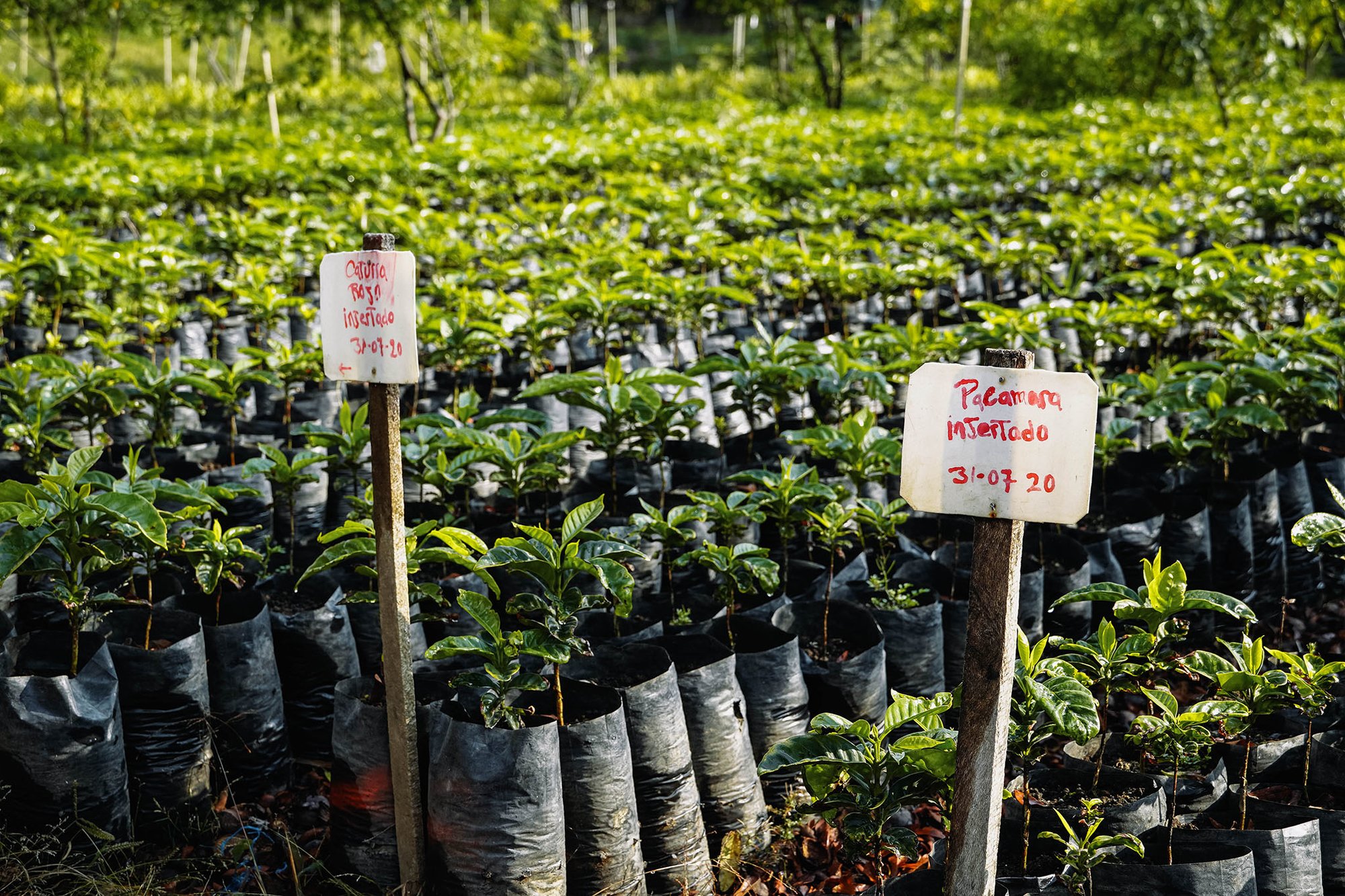
Coffee leaves infected with fungus. Adobe Stock photo.
For well over a year now, the COVID-19 pandemic has sent shock waves through the global economy. But despite the incredibly challenging working environment imposed by the lockdown restrictions, consumers have still been able to get their hands on their favorite beverage, thanks mainly to the resilience of coffee producers and supply chains.
As the world begins to loosen its restrictions, one Purdue University scientist warns about the potential for another round of trouble facing the coffee industry.
Back in 2011, a powdery orange fungus called coffee leaf rust began spreading throughout Central and Latin America. This fungus damaged nearly 70% of crops and caused more than $3.2 billion in damage to the region. Many believe this was due in part to the 2008 global financial crisis that negatively affected coffee demand and prices.
“Management boards in these coffee-producing countries would send agents out to farmers to make sure they had proper equipment, access to fungicides, sprayers and access to information about how to prune, fertilize and sanitize their crops,” said Catherine Aime, a Purdue professor of mycology in the College of Agriculture. “After 2008, many of those boards were eradicated or defunded, and farmers stopped getting updated information and access to equipment and fungicides.
“Now, we’re in a worse position. The COVID pandemic is taking away what few resources there were. That is leaving coffee crops around the world, and especially in the Americas, vulnerable.”

Coffee Leaf Rust Preventive Measures
The lack of resources during the pandemic has allowed coffee leaf rust, which causes tree defoliation and significant decreases in yield, to continue spreading rapidly. By the fall of 2020, the pathogen had reached as far as Hawaii, a coffee region previously unaffected by the fungus.
Aime and colleagues from Rutgers University, the University of Arizona, the University of Hawaii at Hilo, Santa Clara University, the University of Exeter, CIRAD in France, and a few other institutions voiced their concerns in a study approved by the Proceedings of the National Academy of Sciences on May 13, 2021. The team provided details on the factors involved in the last major coffee leaf rust outbreak and what preventive measures to take to prevent future occurrences.
The coronavirus pandemic has not only diverted resources away from coffee management but has also closed many coffee-producing borders, which crippled the movement of migrant workers essential for coffee harvests in Latin America and Central America. Without coffee cherries being harvested, profits fall further, which leads to higher prices for the consumer.

The team suggested several measures that could help with rust issues: sourcing coffee from more areas, including those not as severely impacted by the fungus; diversifying the farms and livelihoods of coffee farmers; increasing prices paid to farmers and fostering more sustainable management practices; increasing coffee consumption and demand to raise prices paid to farmers; and developing cooperatives and partnerships to pool resources, knowledge, and funding for coffee farmers.
The Foundation for Food & Agriculture Research has provided funds for Aime to begin work on sequencing the coffee leaf rust genome and genotype rust races. She is also requesting additional funding to complete that research so that coffee producers can grow cultivars better engineered to resist rust and the coffee industry can understand the rust’s weaknesses and develop more effective fungicides.
“New cultivars is where the focus is right now because that’s a quicker fix, but it won’t be the long-term answer,” Aime said. “We need to get as much information about this pathogen as possible to solve this problem permanently.”
Without developing effective ways to eliminate coffee leaf rust, global coffee supplies may suffer, which will ultimately affect the price and availability of your favorite beverage.
Read Next: Is the Air Force Replacing Coffee Breaks With Nerve Stimulation?

Kelly Getzelman is a former staff writer for Coffee or Die Magazine. A retired Navy SEAL chief petty officer, Getzelman has nearly two decades of special operations experience and is always ready to ship out on his next epic coffee adventure.
BRCC and Bad Moon Print Press team up for an exclusive, limited-edition T-shirt design!
BRCC partners with Team Room Design for an exclusive T-shirt release!
Thirty Seconds Out has partnered with BRCC for an exclusive shirt design invoking the God of Winter.
Lucas O'Hara of Grizzly Forge has teamed up with BRCC for a badass, exclusive Shirt Club T-shirt design featuring his most popular knife and tiomahawk.
Coffee or Die sits down with one of the graphic designers behind Black Rifle Coffee's signature look and vibe.
Biden will award the Medal of Honor to a Vietnam War Army helicopter pilot who risked his life to save a reconnaissance team from almost certain death.
Ever wonder how much Jack Mandaville would f*ck sh*t up if he went back in time? The American Revolution didn't even see him coming.
A nearly 200-year-old West Point time capsule that at first appeared to yield little more than dust contains hidden treasure, the US Military Academy said.












